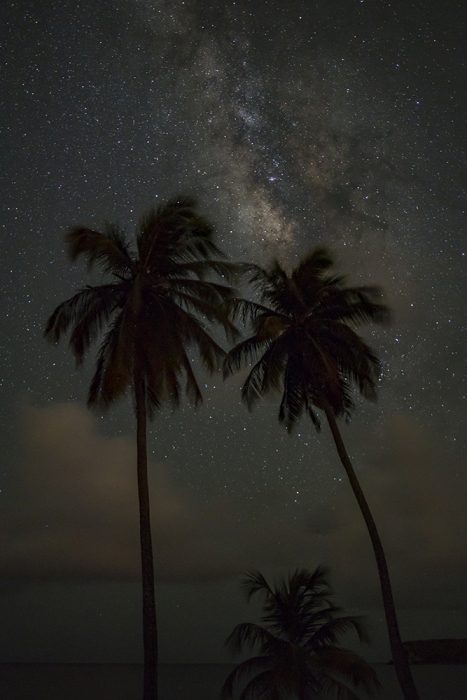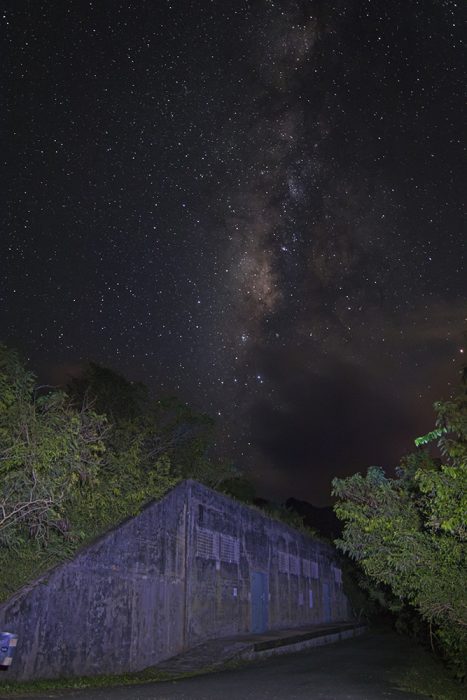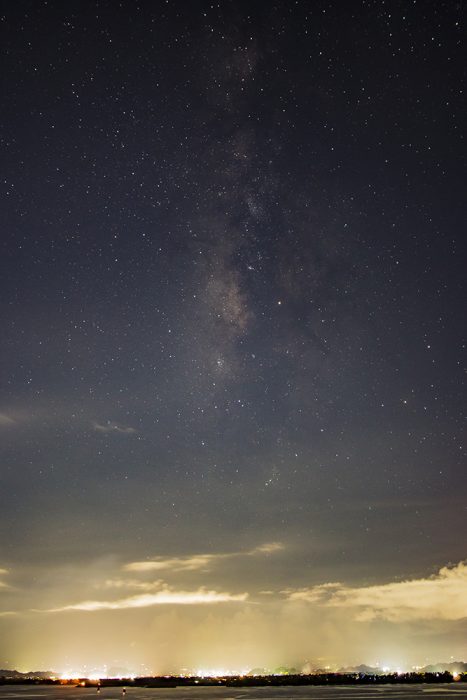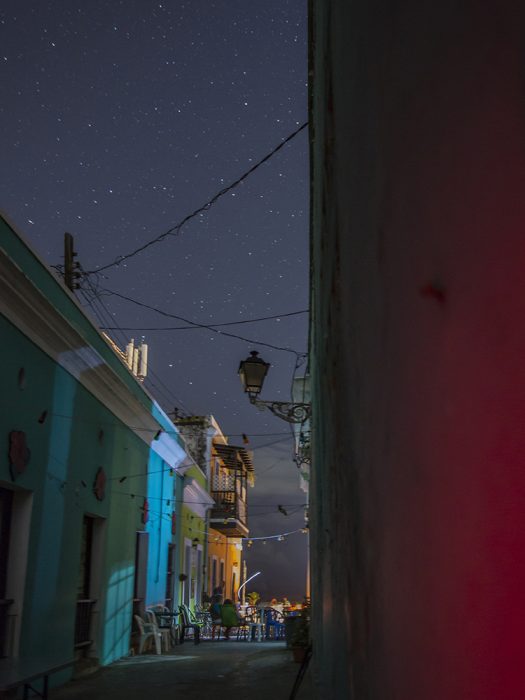
I have been documenting the few dark skies left in the unincorporated US territory of Puerto Rico for almost four years. While the main subjects of these photographs are the jagged island landscapes that frame the movements of stars and planets, most of the planning and exploration involved deals not so much with astronomical concerns, but with going around the abundant light pollution of urban centers and suburban sprawls.
A quick look at any light pollution map shows it is more forgiving along the southern coast of this Caribbean archipelago, with several pockets of darker skies bordering its reach or even extending slightly into it. One such place (and probably the most inaccessible) is the Isla de Mona Nature Reserve, a carbonate island between Puerto Rico and Hispaniola. Regarded by some as one of the most cavernous localities on Earth (Frank et-al 1998), recent archaeological findings deep within its caves have opened a window to the first encounters between Europeans and Native Americans. After nightfall, the sky above Mona’s porous surface opens up an underappreciated door of light into that very past and beyond.

Since all starlight we see (including the Sun’s) was emitted in the past, gazing at dark skies is in many ways like looking at something larger than ourselves—back into our own history. But even from the relative darkness of what we may think of as a Pre-Columbian sky, a vague trace of light pollution is still somewhat visible above the horizon. It would seem that nowhere in the Puerto Rican archipelago is there any escape from the eternally fired-up sky of modernity.
Because camera settings in these photos vary only slightly from one another, they can give a raw idea of how light pollution reflects in all documented locations. In some highly polluted sites, it is easy to mistake the artificial clarity of the night sky with dusk or dawn, while in other less polluted ones, the difference is sharply noticeable. In a few photos, the foreground is lighted up by artificial sources reaching the composition from a distance, yet in others there is so little light pollution that the foreground is completely backlit by the stars and either photographed as-is or overexposed a bit at high ISOs (or even light-painted on-site with a headlamp).
Another location spared from the worst light pollution in Puerto Rico is the southeastern island municipality of Vieques; also home to one of the few (and brightest) bioluminescent bays in the world. Protected by a nature reserve designstion, Bahía Mosquitos is one of the island’s most coveted attractions, generating precious tourist activity for its always-struggling economy. With so much to be gained (and lost), one would imagine its citizens engaging light pollution as a vital issue, but this is not necessarily the case.

Vieques however, is not alone in apparently taking for granted its valuable dark-sky resources. Judging from the latest measurements of The New World Atlas of Artificial Sky Brightness (Falchi et al., 2016), other world-class destinations in very distant latitudes with sizable populations, like Whitehorse, Canada, show similar light pollution readings. With a significant economic activity like aurora viewing also depending on the quality of their night sky, one may wonder just how widespread is the lack of measures against light pollution. Over at the southern hemisphere of the continent, San Pedro de Atacama’s astronomical tourism seems to fare better under the aegis of a governmental office in charge of protecting northern Chile’s dark skies—as many of the world’s most important telescopes are also located under the same sky, of course.
The ample disparity in policy might be due to the fact that we are only recently beginning to understand the consequences of artificial light on the environment and on the planet as a whole. Astrophotography may capture the aesthetic joy and existential broadness of gazing at the natural darkness of the sky, but it is perhaps the high costs of light pollution to the health of humans and other species—together with the huge impact of its energy waste on carbon emissions—that can better call on the attention of policy and decision makers worldwide. We can only speculate how this could play out in the current order of things.
Success stories like that of Arizona Sky Village, Westcliff and Silver Cliff, Colorado, along with other communities joining the efforts of the International Dark-Sky Association (IDA), attest not only to all the work that lies ahead in this area of environmental management, but also to the full potential and untapped benefits of actively pursing dark skies as public policy. The more we learn about this urgent problem, the more it seems we have to gain from restoring the natural darkness of the night sky.
Javier A. Román-Nieves
***
Guánica State Forest, UNESCO Biosphere Forest



Isla de Mona Nature Reserve

Vieques, Puerto Rico

Great Blackout of 2016

